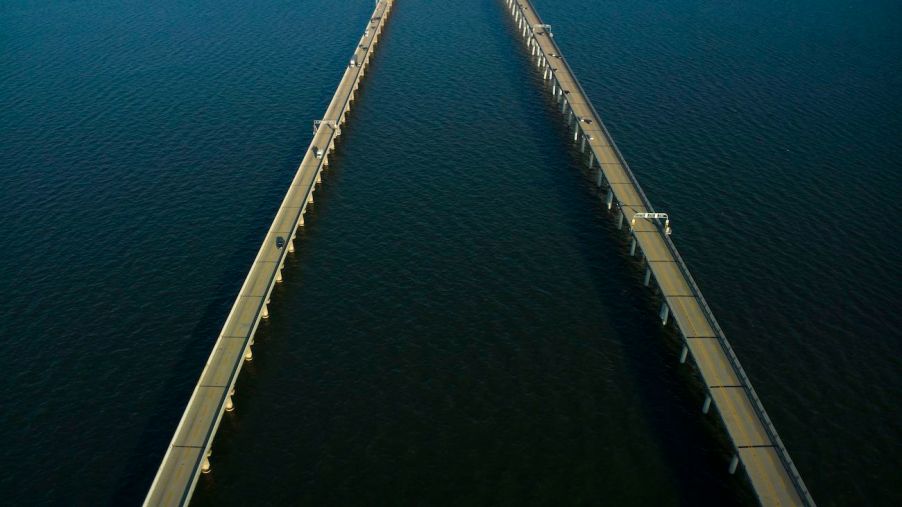
There’s Something Really Creepy About How the Chesapeake Bay Bridge Looks
There’s a reason so many ghost stories and urban legends take place on bridges. Aside from the inherent Unheimlich of liminal spaces, which is a little heavy this early in the article, challenging gravity with only a stranger’s engineering between oneself and doom is necessarily a creepy undertaking. That said, some bridges are just asking to get haunted. Here’s what’s up with driving on the Chesapeake Bay Bridge.
What’s to know about the Chesapeake Bay Bridge?
On paper, the Chesapeake Bay Bridge compares favorably with similar spans across the country. It’s a busy thoroughfare that sees its share of accidents, but by all reports, the core engineering is safe and solid. In fact, a 2015 study by the Maryland Transit Authority found that, given routine maintenance, the Bay Bridge should stand through 2065.
As the main route between the Baltimore-Washington DC metroplex and the coast, the Chesapeake Bay Bridge sees significant traffic on a daily basis, and like every busy road, it has its share of traffic tragedies. Notably, vehicles broke through guardrails and fell into the Bay in 2008 and 2013, sparking public outcry and immediate improvements in road and guardrail safety. Statistically speaking, however, accidents on the Bay Bridge are exceptions rather than the rule. Per the Baltimore Sun, the bridge sees four times fewer annual accidents than comparable stretches of highway elsewhere in Maryland.
Even so, the Sun quotes several regular commuters who find the Bay Bridge awkward, dangerous, and, yes, creepy. Why?
How the Bay Bridge holds up
It’s an article of faith among horror luminaries – Lovecraft and Stephen King are both firm on the subject – that the greatest fear is fear of the unknown. In that respect, Chesapeake Bay Bridge may be the scariest span in the United States, simply because of what it doesn’t have.
Properly speaking, the Chesapeake Bay Bridge is a dual-span suspension bridge, which simply means it’s two suspension bridges linked together for added strength. Suspension bridges are common in American cities, and dual spans, in particular, cross waterways from the Hudson and Ohio Rivers to Lake Huron and the Gulf of Mexico. Like all suspension bridges, the Bay Bridge is a stretch of road built around towers driven deep into bedrock. These towers loom over the bridge, supporting webs of steel cables that, yes, suspend the bridge well above the water. What’s scary about that?
Where’s my bridge?
Drivers can’t see it.
Top that for fear of the unknown. Both ends of the Chesapeake Bay Bridge support long stretches of highway with no nearby towers, cables, or walls. Going either way, drivers on the Bay Bridge see no nearby sign of anything holding them up. For the first few minutes, the span simply floats, seemingly supported by nothing more than the collective hopes of its 80,000-odd east- and westbound daily drivers.
Add to that chancy weather – the Bridge routinely shuts down in hurricane season – tight quarters with no hard shoulders, and guardrails so low they offer a picturesque but worrying view of the Bay itself, and one begins to understand drivers’ concerns. Still, no ghost stories are needed here. A few oddities of engineering make the statistically safe and solid Chesapeake Bay Bridge an engine of commuter anxiety.



